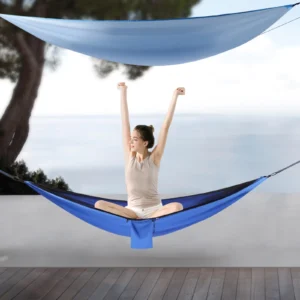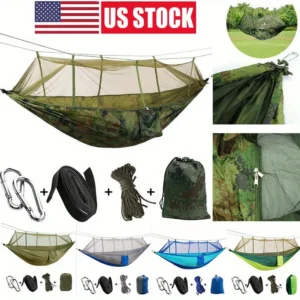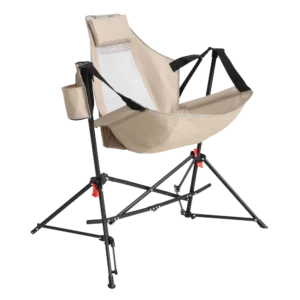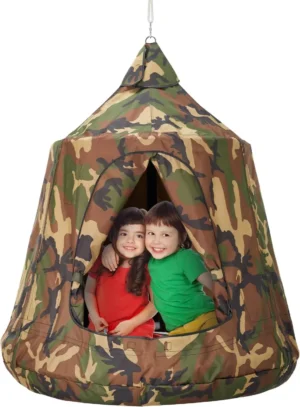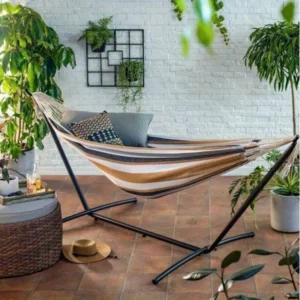The Essentials of Hammock Gear Organization: Why It Matters
When you swap a tent for a hammock, you’re trading floor space for a suspended cocoon—and that changes everything about how you organize your camping gear. Unlike tent camping where items can be scattered across the floor, hammock camping requires thoughtful organization in a three-dimensional space with unique challenges.
For backpackers especially, how you organize your hammock setup isn’t just about convenience—it’s about weight. Every ounce matters when you’re carrying everything on your back, making lightweight organization solutions essential for maintaining both comfort and mobility.
Proper hammock gear organization offers several key benefits:
- Protection from the elements: Keeping gear dry and clean above ground level
- Accessibility: Having essential items within reach without leaving your hammock
- Comfort maximization: Creating more usable space inside your hammock
- Efficiency: Reducing setup and breakdown time at camp
The difference between a disorganized hammock setup and a well-planned one becomes painfully clear when you’re fumbling for your headlamp in the middle of the night. While a typical tent might offer 15-30 square feet of floor space, a hammock provides only about 7-8 square feet of usable surface—making smart organization not just helpful, but necessary.
Thoughtful organization transforms your hammock from simply a place to sleep into a complete suspended home in the wilderness. The principles of ultralight hammock packing techniques become especially important as you refine your system for maximum efficiency with minimum weight.
Many campers find that our premium ultralight camping hammock sets provide an excellent foundation for building a lightweight, organized suspension system that keeps everything in its place.
Planning Your Hammock Organization System
Before diving into specific storage solutions, take time to plan your organization system based on your unique needs and hammock setup. Start by creating a simple inventory of what you’ll need to store, then prioritize items by how often you’ll access them.
Consider categorizing your gear into logical groups:
- In-hammock essentials: Items you’ll need while lying in the hammock (headlamp, water bottle, phone, small book)
- Nearby necessities: Things you’ll want quick access to but don’t need inside (extra layers, snacks)
- Ground/under-hammock storage: Larger items accessed less frequently (backpack, cooking gear, shoes)
Your shelter configuration significantly impacts your organization options. A wider tarp provides more protected external storage space, while an integrated bug net may limit attachment points but offer built-in pockets.
When making decisions about gear organization, always consider the weight impact. Even small organizational additions can add up quickly. Aim for multi-purpose items and lightweight materials whenever possible.
Remember that weight distribution matters in a hammock system. Keeping your center of gravity low and balanced prevents uncomfortable tipping or swaying when reaching for items. Heavier gear should be stored underneath rather than on your ridgeline when possible.
Planning a complete organization system from the beginning saves weight compared to adding piecemeal solutions later. For more detailed strategies, our ultimate guide to ultralight hammock provides valuable insights into creating a cohesive, weight-conscious system.
Ridgeline Organization: Your Command Center
The ridgeline—that horizontal cord running above you in your hammock—is prime real estate for organization. This suspended line creates your hammock’s command center, keeping essential items within arm’s reach without cluttering your sleeping space.
Ridgeline organizers come in several forms, each with advantages:
- Mesh pocket organizers: Lightweight with excellent visibility of contents
- Fabric pouches: Better protection for sensitive items, often with multiple compartments
- Multi-pocket systems: Maximum organization with designated spaces for specific gear
- Minimalist hooks and clips: Ultra-lightweight options for hanging individual items
When selecting a ridgeline organizer, material choice significantly impacts weight and functionality:
| Material | Weight (approx) | Water Resistance | Durability | Visibility |
|---|---|---|---|---|
| Mesh | 0.7-1.5 oz (20-42g) | Low | Medium | High |
| Silnylon | 1.0-2.0 oz (28-57g) | High | High | Low |
| Dyneema | 0.5-1.0 oz (14-28g) | High | Very High | Low |
Remember that ridgelines have weight limitations—typically 5-10 pounds maximum depending on your hammock design. Exceeding this can deform your hammock or cause structural failure.
Ideal items for ridgeline storage include:
– Headlamp or small flashlight
– Smartphone
– Reading glasses
– Small snacks
– Lightweight gloves/hat
– Earplugs and eye mask
Position frequently used items directly above your chest or head for easy access, with less-used items toward the ends. Small carabiners or mitten hooks allow for quick attachment and removal without fumbling with knots.
For extended trips where every ounce counts, learning how to efficiently pack your hammock system including ridgeline organizers can make a significant difference in your overall load.
Inside Your Hammock: Peak Storage and Interior Solutions
Beyond your ridgeline, the interior of your hammock offers additional organization opportunities. The gathered ends or “peaks” of your hammock create natural pockets that can be enhanced for storage.
Many modern hammocks include built-in internal pockets at one or both ends. These peak storage areas work well for items you won’t need while sleeping:
– Extra clothing layers
– Tomorrow’s clean socks
– Small electronics in protective cases
– Personal items like wallet or keys
If your hammock lacks built-in storage, several lightweight solutions can be added:
- Ultralight stuff sacks: Small 0.5-0.75 oz (14-21g) waterproof sacks can be clipped inside hammock ends
- Fabric triangles: Simple triangular pouches that attach to gathered ends
- Shock cord netting: Flexible storage that expands to hold bulkier items
For securing valuables while maintaining accessibility, consider:
– Hidden zippered pouches attached to interior hammock walls
– Small waterproof cases with attachment points
– Lanyard systems to prevent dropped items
When adding interior storage, position items to maintain your hammock’s natural center of gravity. Heavy items placed at either end can create uncomfortable pressure points or cause the hammock to tip.
Small, ultralight clips (0.2-0.3 oz/5-8g each) allow for versatile attachment without damaging your hammock fabric. Look for non-abrasive plastic or aluminum options designed specifically for lightweight fabrics.
Many campers appreciate the integrated storage features found in our camping hammock sets with bug nets, which often include thoughtfully placed interior pockets and attachment points for personal items.
Under-Hammock Storage: Keeping Gear Off the Ground
One of the major advantages of hammock camping is elevating yourself off the ground—extend this benefit to your gear with under-hammock storage solutions. These systems protect equipment from moisture, dirt, and curious critters while keeping everything accessible.
Gear slings (sometimes called hammock underbelts or gear lofts) come in several configurations:
- Full-length slings: Run the entire length of your hammock, providing maximum storage capacity
- Partial slings: Cover only a portion of the under-hammock area, saving weight
- Attached systems: Integrate directly with your hammock suspension
- Independent systems: Set up separately from your hammock for more flexibility
Quality gear slings typically weigh between 2-4 oz (57-113g) depending on size and material. When properly positioned, they can hold surprisingly heavy items without sagging into your sleeping space.
Best items for under-hammock storage include:
– Backpack
– Shoes/boots (placed in a protective bag)
– Cooking system
– Extra water
– Bear canister
– Bulky clothing
Weather protection considerations are crucial for under-hammock storage. Position items under the coverage of your tarp whenever possible. For additional protection, consider:
– Waterproof stuff sacks for sensitive items
– A lightweight groundsheet directly under important gear
– Strategic placement away from likely water runoff paths
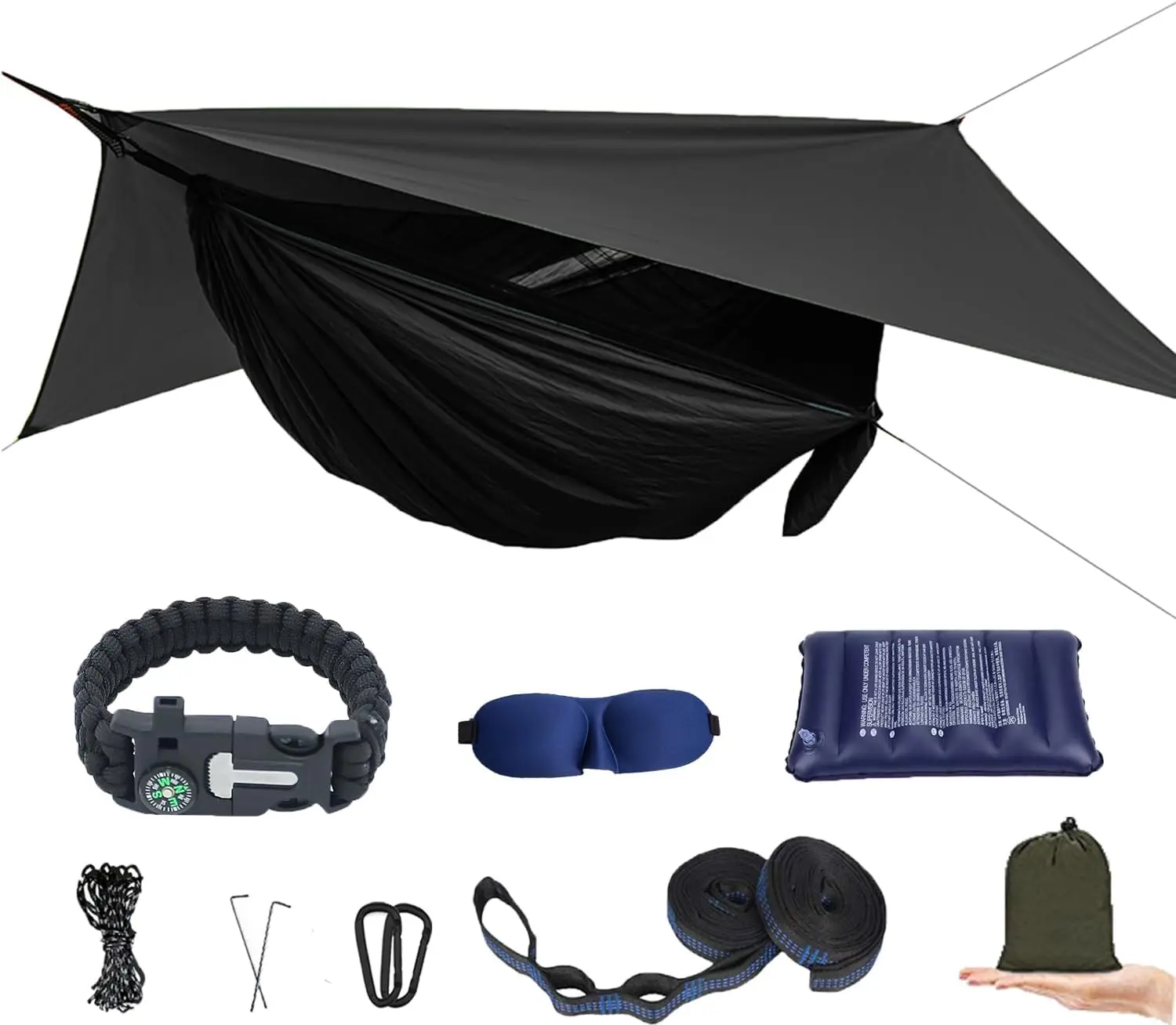
When using underquilts for insulation, gear slings must be properly positioned to avoid compressing the insulation. Many underquilt systems include built-in storage options that work in harmony with their primary function.
For a complete approach to suspended camping, our complete camping hammock systems include coordinated components that work together to create efficient storage solutions.
Creating a Functional Ground Space Under Your Tarp
While hammock camping elevates your sleeping surface, having an organized ground space remains important. The area beneath your tarp but outside your hammock becomes your “staging area”—a protected space for gear preparation and organization.
For minimal ground protection that adds negligible weight:
– Polycryo (window insulation film): 1-1.5 oz (28-42g) for a generous sheet
– Tyvek sheet: 1.5-2 oz (42-57g) with better durability
– DCF (Dyneema Composite Fabric) groundsheet: 1-2 oz (28-57g) with superior waterproofing
Arrange your ground space strategically with these principles:
– Position your backpack closest to your hammock entry point for easy access
– Store cooking equipment furthest from your sleeping area
– Create a small “changing area” with dry ground protection for morning/evening clothing changes
– Establish a designated spot for wet or dirty items away from clean gear
Your backpack can serve as the hub of your ground organization system. Consider:
– Leaving the empty pack partially open as a gear “closet”
– Using the pack’s brain/top lid as a separate organizer for frequently used items
– Propping the pack upright against a tree for better organization and access
For maximum weather protection, position your ground staging area at the center of your tarp coverage rather than near the edges. In heavy rain, create subtle trenching around your ground space to direct water flow away from gear.
Understanding proper packability of lightweight hammocks helps you design a ground space that transitions efficiently between packed and deployed states, minimizing setup and breakdown time.
Ultralight Storage Accessories: The Details Matter
When building a lightweight hammock organization system, small accessories make a significant difference. These connective elements tie your storage system together while adding minimal weight.
| Accessory | Typical Weight | Function | Material Options |
|---|---|---|---|
| Mini Carabiners | 0.2-0.4 oz (5-11g) | Connect gear to suspension | Aluminum, plastic |
| S-Hooks | 0.1-0.2 oz (3-5g) | Fixed attachment points | Aluminum, titanium |
| Cord Locks | 0.05-0.1 oz (1-3g) | Adjustable tension | Plastic, aluminum |
| Mitten Hooks | 0.1-0.2 oz (3-5g) | Quick-release points | Plastic, aluminum |
Ultralight stuff sack systems provide organized storage with minimal weight penalty. Consider these options:
- Silnylon stuff sacks: 0.3-0.5 oz (8-14g), good water resistance, moderate price
- DCF/Dyneema stuff sacks: 0.2-0.4 oz (5-11g), excellent waterproofing, higher cost
- Mesh stuff sacks: 0.2-0.3 oz (5-8g), visibility and breathability, minimal water resistance
For electronics and valuables requiring complete waterproofing, ultralight dry bags add only 0.5-0.8 oz (14-23g) while providing reliable protection. Look for roll-top closures with welded seams for maximum security.
Cord management prevents tangling and keeps your system organized:
– Shock cord segments (1-2mm diameter) add elasticity for tension organization
– Fixed loops with cord locks create adjustable attachment points
– Tiny line tensioners (0.1 oz/3g) allow for perfect positioning
While commercial solutions offer convenience, DIY alternatives often provide significant weight and cost savings. Simple homemade organizers can reduce weight by 30-50% compared to commercial equivalents while maintaining functionality.
For more comprehensive storage ideas, our guide to conquering clutter with brilliant hammock storage provides additional ultralight solutions for organizing every aspect of your hammock system.
Camping Hammock Sets with Bug Net, Ultralight Camping Hammock Sets
$139.72 Select options This product has multiple variants. The options may be chosen on the product pageCamping Hammock Sets with Bug Net, Complete Camping Hammock Systems
Price range: $82.73 through $97.96 Select options This product has multiple variants. The options may be chosen on the product pageFolding Hammock Sets, Lightweight Hammock Sets
$295.80 Select options This product has multiple variants. The options may be chosen on the product pageComplete Camping Hammock Systems, Hanging Egg Chair Sets
$266.73 Select options This product has multiple variants. The options may be chosen on the product pageComplete Camping Hammock Systems, Folding Hammock Sets, Lightweight Hammock Sets, Quick Setup Hammock Sets
$255.54 Select options This product has multiple variants. The options may be chosen on the product page
DIY Lightweight Organization Solutions
Creating your own hammock organization gear allows for customization while significantly reducing weight and cost. Here are some simple DIY projects that require minimal skills and materials.
No-Sew Mesh Ridgeline Organizer
Materials:
– Mesh produce bag or lightweight sports mesh (0.5 oz/14g)
– 1mm shock cord (0.2 oz/5g)
– 2 small cord locks (0.1 oz/3g)
– Scissors
Steps:
1. Cut mesh to desired size (typically 8” × 12”)
2. Thread shock cord through top edge creating a channel
3. Add cord locks to each end
4. Trim excess cord, leaving enough to secure around ridgeline
This simple organizer weighs approximately 0.8 oz (23g) compared to commercial versions often weighing 1.5-2.5 oz (42-71g).
Ultralight Stuff Sacks
Materials:
– Silnylon scraps or ripstop nylon
– Grosgrain ribbon or thin cordage
– Cord lock (optional)
Steps:
1. Cut fabric to size (typically square or rectangular)
2. Fold in half and seal sides with seam tape or minimal stitching
3. Fold top edge to create drawstring channel
4. Thread cordage through channel
5. Add optional cord lock
Shock Cord Attachment System
Materials:
– 2mm shock cord
– Cord locks
– Small s-hooks or mitten hooks
Steps:
1. Cut shock cord to various lengths (4-12 inches)
2. Add hooks to one end
3. Create adjustable loops with cord locks at other end
4. Attach to ridgeline or hammock edges for hanging gear
Many commercial products can be modified to reduce weight:
– Remove excessive webbing and buckles
– Replace heavy cordage with lightweight alternatives
– Trim unnecessary fabric and features
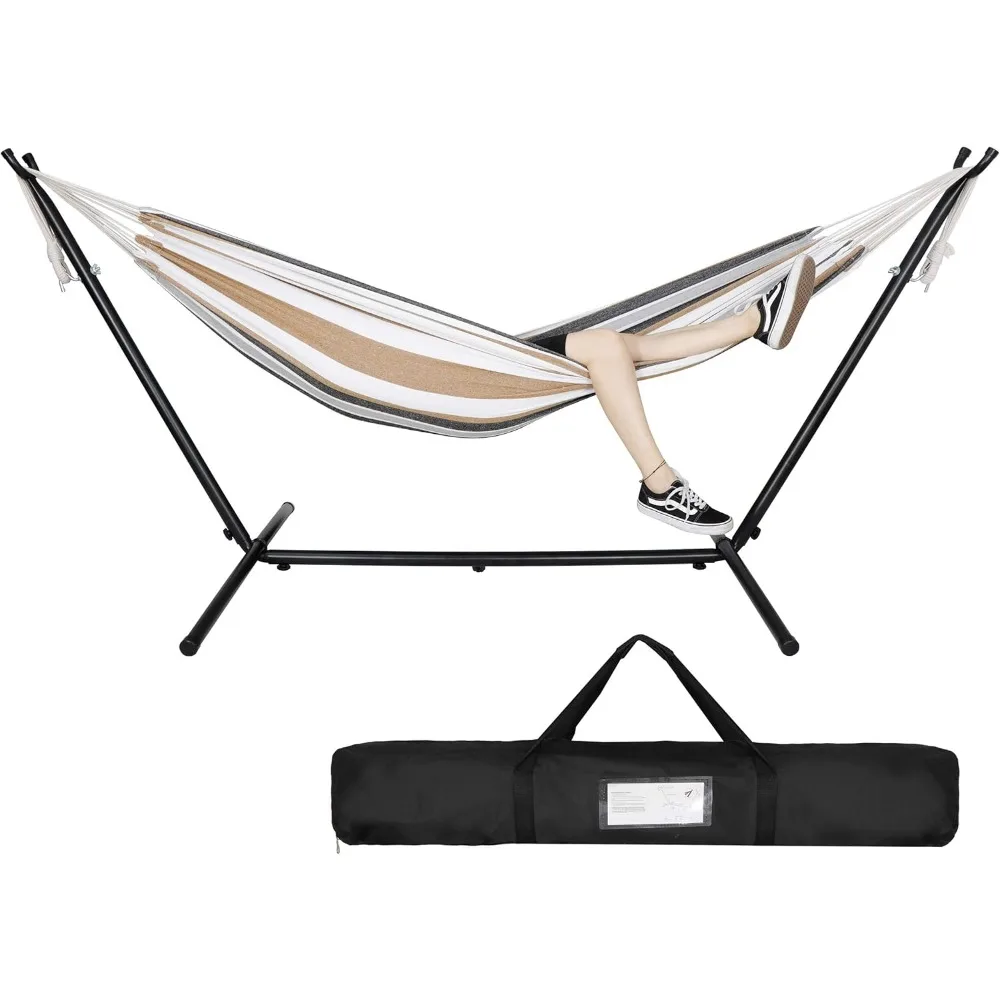
When creating DIY solutions, always consider the lightweight hammock durability for outdoor adventures to ensure your modifications don’t compromise structural integrity or safety.
Troubleshooting Common Organization Challenges
Even well-planned hammock organization systems encounter challenges. Here are solutions to common problems you might face:
Problem: Items falling through hammock during night movement
Solution:
– Create “capture pockets” by clipping small mesh bags to both sides of your ridgeline
– Use stuff sacks with closures rather than open pockets for smaller items
– Install a “floor” of lightweight fabric under ridgeline organizers to catch falling items
Problem: Accessing items destabilizes hammock position
Solution:
– Distribute weight evenly on both sides of ridgeline
– Position most-used items directly above your center of gravity
– Use quick-release attachments that require minimal force to operate
– Create counter-balancing by storing similar-weight items on opposite sides
Problem: Gear getting wet in rain despite tarp coverage
Solution:
– Implement drip lines on hammock suspension to prevent water tracking
– Use waterproof stuff sacks for vulnerable items
– Create water barriers with small DCF fabric pieces above gear areas
– Angle under-hammock storage toward the center of your tarp coverage
Problem: Small items getting lost in hammock folds
Solution:
– Use brightly colored gear for small items
– Attach retractor cords to frequently used small items
– Establish consistent “homes” for small gear
– Create dedicated pockets for tiny essentials like earplugs or medications
Problem: Condensation forming on stored gear overnight
Solution:
– Use breathable storage bags for clothing and insulation
– Create airflow channels between hammock body and stored gear
– Position moisture-sensitive items away from hammock ends where condensation collects
For comprehensive solutions to organization and setup challenges, our camping hammocks with stands provide stable platforms that minimize many common hammock organization issues.
Seasonal Adjustments to Your Organization System
Your hammock organization needs change significantly with the seasons. Adapting your system for different conditions ensures comfort and efficiency year-round.
| Season | Storage Priorities | Special Considerations |
|---|---|---|
| Summer | Ventilation, bug protection | Mesh storage for airflow, bug repellent accessibility |
| Fall | Rain protection, temperature regulation | Quick access to layers, waterproof storage |
| Winter | Insulation management, glove-friendly access | Preventing items from freezing, reducing exposure time |
| Spring | Mud/moisture management, variable conditions | Separation of wet/dry gear, easy layer access |
During warm weather, prioritize:
– Breathable mesh storage that promotes airflow
– Hydration accessibility
– Sun protection storage (sunscreen, hat, glasses)
– Bug repellent in quick-access locations
For colder conditions, adapt with:
– Insulated pockets for electronics and water
– Glove-friendly zipper pulls and attachments
– Storage locations that minimize exposure when accessing gear
– Quick-access points for extra layers
Moisture management becomes critical in wet seasons:
– Implement strict separation between wet and dry storage areas
– Add additional waterproof barriers for sensitive equipment
– Position gear further under tarp center for maximum protection
– Use drainage features on under-hammock storage
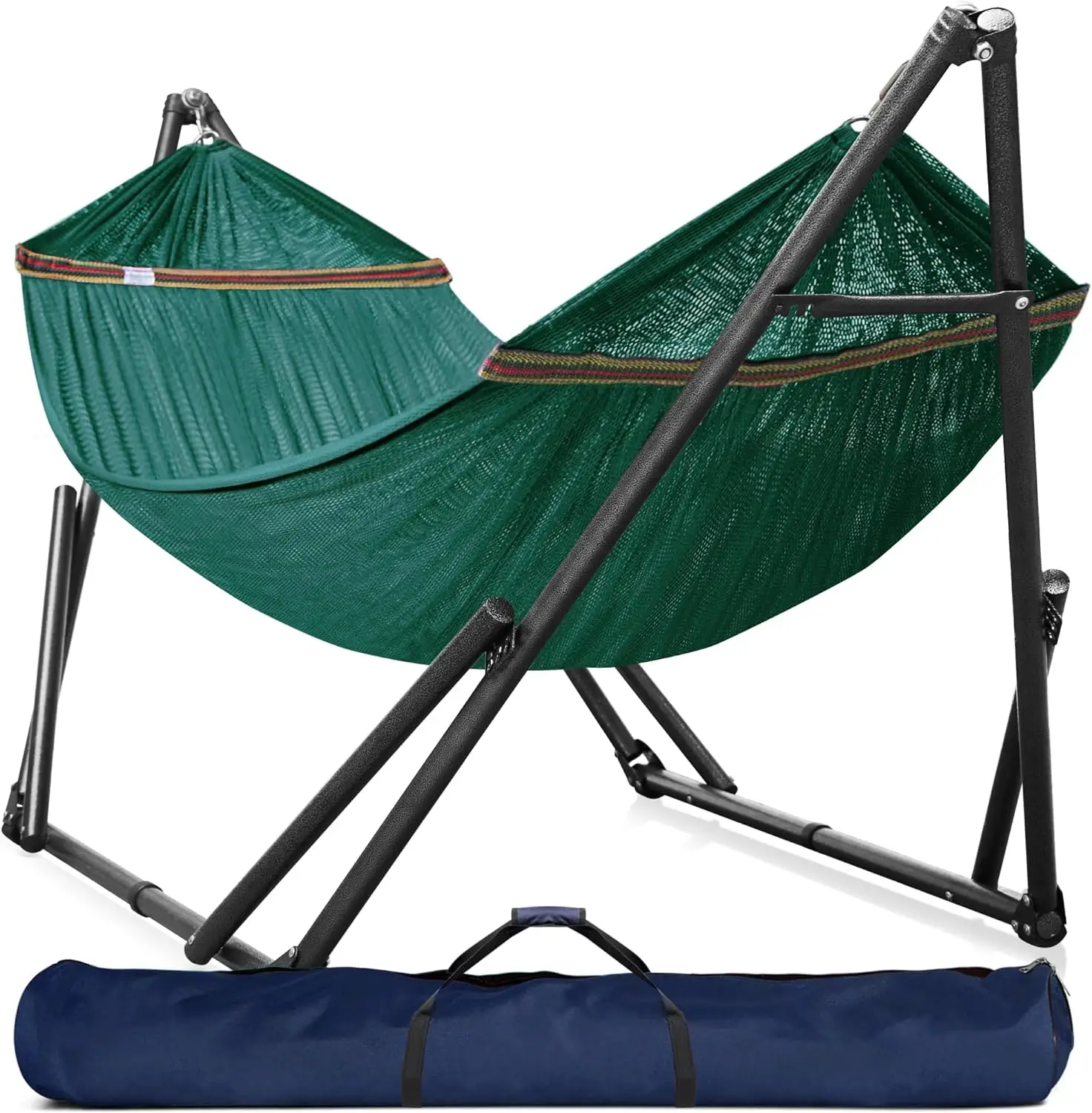
When transitioning between seasons, reassess your entire system rather than making piecemeal changes. Our lightweight hammock sets provide versatile foundations that adapt well to changing seasonal requirements with minimal modifications.
Streamlining Your System: Evolution Through Experience
The perfect hammock organization system doesn’t happen overnight—it evolves through field testing and personal experience. What works beautifully for one camper may feel cumbersome to another.
As you gain experience with hammock camping:
– Remove items that consistently go unused
– Relocate frequently accessed gear to more convenient positions
– Replace single-purpose items with multi-functional alternatives
– Refine attachment methods based on real-world use
Look for items that can serve multiple organizational roles:
– A stuff sack that becomes a pillow
– A bandana that works as a gear wrap and washcloth
– Clothing bags that double as hammock end organizers
Track your system’s evolution by occasionally weighing your complete organization setup. Many hammock campers find they can reduce organizational gear weight by 30-50% as they refine their systems without sacrificing functionality.
Remember that comfort and accessibility sometimes justify small weight penalties. A well-organized hammock system that lets you sleep soundly is ultimately lighter than one that leaves you fumbling in the night.
For additional insights on refining your complete setup process, our ultralight hammock setup guide provides valuable techniques that complement efficient organization systems.
What Can Go Wrong? Prevention Through Organization
Will my gear stay dry under my hammock?
Not automatically. While being off the ground helps, you’ll need waterproof storage bags and proper positioning under your tarp. Create a “drip edge” away from stored gear and use water-resistant gear slings rather than storing directly on the ground.
How do I prevent losing small items in my hammock?
Implement a “leash system” for crucial small gear like headlamps and knives. Use brightly colored cord to attach these items to your ridgeline or internal attachment points. Establish consistent storage locations and return items immediately after use.
Can wildlife access my food if stored in hammock systems?
Yes. While being elevated helps with some creatures, proper food storage requires dedicated systems like bear canisters or bear hangs separate from your hammock. Never store food inside your sleeping area.
Will my hammock be damaged by hanging too much gear?
Possibly. Hammocks have weight limits that include both you and your gear. Distribute weight evenly and use attachment points designed for gear hanging. Avoid sharp objects that could abrade or puncture fabric. Check manufacturer recommendations for your specific hammock.
How do I protect electronics in a hammock environment?
Use dedicated waterproof storage with padding for protection. Keep electronics in the center of your hammock system where they’re least likely to experience condensation. Consider small silica gel packets in electronics storage to absorb moisture.
Proper organization prevents most common hammock camping mishaps. For more tips on creating a comfortable experience, explore how to elevate sleep with lightweight hammock camping techniques that complement good organization.
Beyond Basic Needs: Luxury Organization Without Weight Penalty
The distinction between necessity and luxury in hammock gear becomes personal as you develop your system. Small comfort enhancements that aid organization can significantly improve your experience with minimal weight impact.
Consider these dual-purpose luxuries:
– A 0.5 oz (14g) inflatable pillow that doubles as electronics protection
– A lightweight sit pad (1-2 oz/28-57g) that serves as organization surface and insulation
– A tiny backpacking towel (0.5 oz/14g) that works as both gear wrap and personal item
The psychological benefits of an organized hammock space extend beyond practical functionality. A well-organized system:
– Reduces anxiety about gear security
– Creates a sense of home in the wilderness
– Improves sleep quality through reduced clutter
– Enhances overall enjoyment of the outdoor experience
The true luxury in hammock camping isn’t bringing more—it’s creating elegant solutions that serve multiple purposes while maintaining ultralight principles. A thoughtfully organized hammock becomes not just a place to sleep, but a suspended sanctuary that enhances your connection to the outdoors.
When evaluating potential luxury additions to your system, apply this simple test: Does the comfort or convenience provided justify the weight? If you consistently answer “yes” after multiple trips, that item has earned its place in your system.


